 |
 |
 |
 |
 |
 |
 |
 |
 |
 |
 |
 |
 |
 |
 |
 |
 |
 |
 |
 |
 |
 |
 |
 |
 |
 |
 |
 |
 |
 |
 |
 |
|
|
Castles and Palaces - 5 |
|
|
|
 |
|
|
|
National Palace of Sintra
The best preserved of the ancient royal palaces of Portugal is the Nacional Palace of Sintra (Palacio Nacional de Sintra), located in the small mountain village of Sintra, near Lisbon. It was spared by the great earthquake of 1755, which destroyed the Ribeira Royal Palace of Lisbon. In addition, it was used more or less continuously from the early 15th to the late 19th century by the Portuguese Royal Family, something that helped in its preservation, and was relatively unchanged in later renovations. |
|
|
|
The history of the Sintra Palace goes back to the times of Islamic domination, when it was the residence of the Moorish rulers of the region. When the village was conquered by D. Afonso Henriques, in the 12th century, the King took the residence in his possesion. The present palace is, however, mainly the result of building campaigns undertaken by King John I, starting around 1415, and by King Manuel I, between 1497 and 1530. |
|
|
|
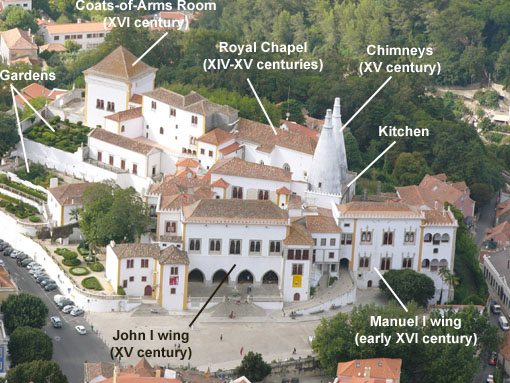 |
|
|
|
Up - Aereal view of Sintra Palace with many of its main parts indicated. The palace consists of a mass of several bodies put together in an apparently chaotic way, a good example of the building logic of the late Middle Ages. Originally, a group of buildings for servicemen hid the entrance of the Palace, but these were demolished in a 20th century renovation. |
|
|
|
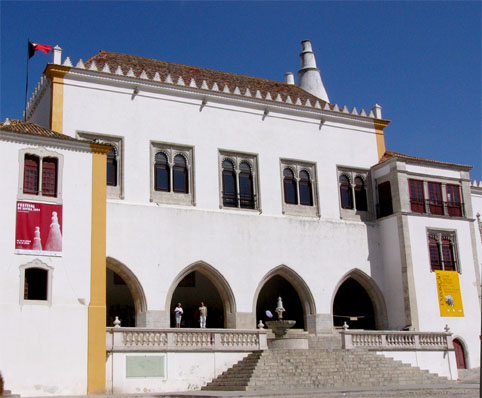 |
|
|
Right - Sintra Palace entrance. This part belongs to the building campaign ordered by King John I in the 15th century. The second floor, with its mud�jar-gothic windows, houses the Swan Room (Sala dos Cisnes) which used to be the ceremonial dining and meeting hall of the palace. The nickname of the room derives from a series of swans painted on its wooden ceiling. |
|
|
|
|
|
|
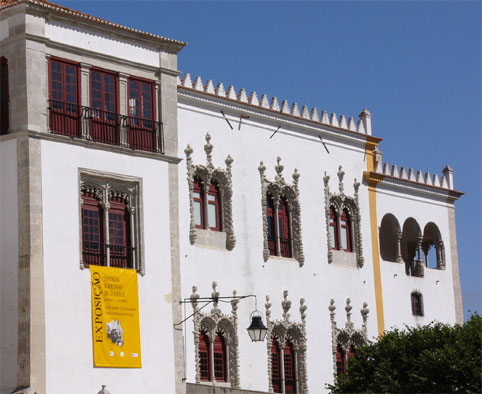 |
|
|
|
Left - To the right of the entrance is located a part of the palace built by King Manuel I in the early 16th century. That King greatly expanded John I's palace, with the addition of new buildings and the redesign of the inner decoration, specially by the application of Sevillian tiles. |
|
|
|
|
|
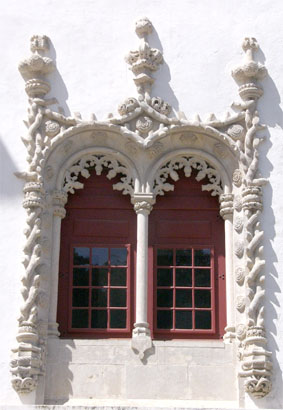 |
|
|
Right - Window of King Manuel I's wing, showing the typical traces of the Manueline style. Note the decoration of the outer frame of the window, that imitates spiralling tree branches or coral. |
|
|
|
|
|
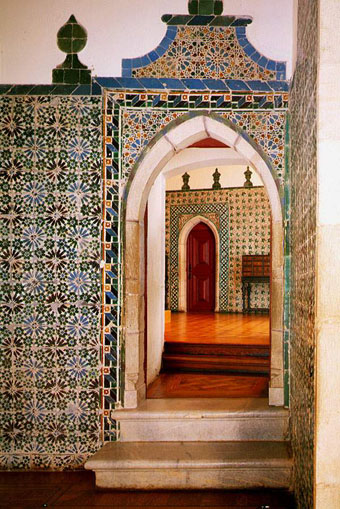 |
|
|
|
|
|
|
Left - Interior view of Sintra Palace. Most of the rooms are decorated with tiles imported from Seville in the late 15th and early 16th century. These tiles, with their multiple colours, shapes and patterns, are the main highlight of the interiors. |
|
|
|
|
|
 |
|
|
|
Page 6
Index |
|




